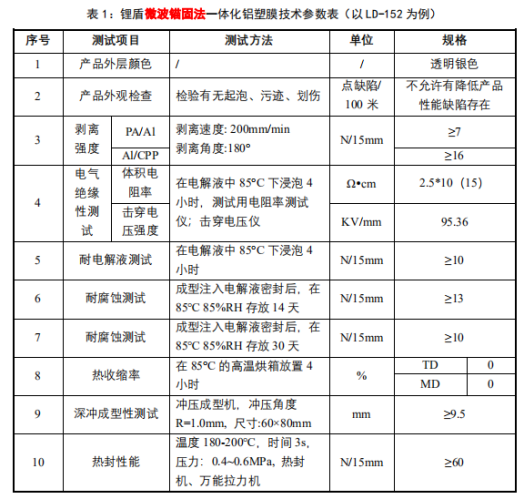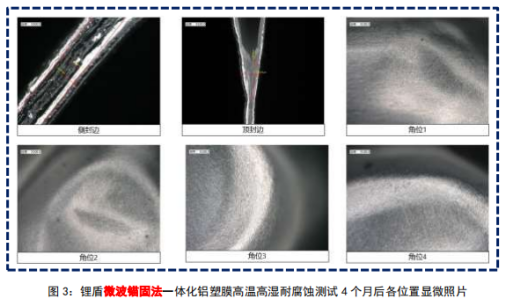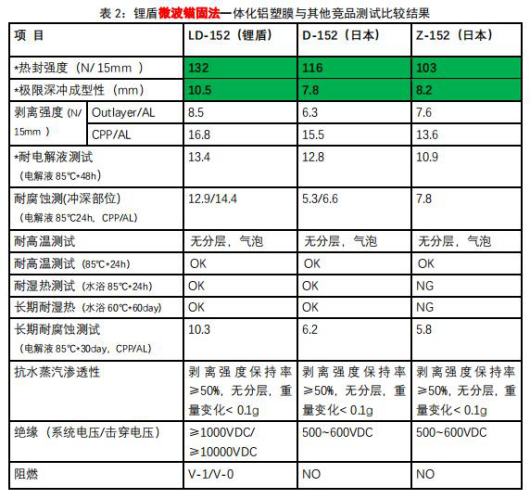2020-06-04
Due to the impact of the global epidemic, foreign production capacity, logistics and imports are limited, and the aluminum-plastic film supply chain has accelerated its transfer to China. By virtue of localization advantages and long-term technological accumulation, domestic aluminum-plastic membrane is penetrating from low-end consumer batteries to the medium and high-end battery market.
"The market pattern is changing, but the terminal's high-tech requirements for aluminum-plastic film have not changed."Xia Wenjin, general manager of lithium shield materialsSaid that as the key packaging material of flexible battery, the service life of consumer field is generally required to be more than 5 years, and that of power and energy storage field is generally required to be more than 20 years.
Therefore, the aluminum-plastic film must have reliable safety, insulation, barrier and corrosion resistance. However, many studies have shown that the delamination of aluminum-plastic film is the main reason for the failure of lithium battery modules.
Gaogong lithium battery learned that the traditional aluminum-plastic film has a layered structure (generally three to four layers), which can be roughly divided into dry method and thermal method according to the different adhesives used at the interface. Its structure is generally pa/al/cpp and pet/pa/al/cpp, and each layer is bonded with adhesives.
However, the most fatal weakness of multilayer composite aluminum-plastic film in application is the delamination problem, that is, the peeling between CPP and CPP, between CPP and Al layer, between PA and Al layer, and the separation between aluminum-plastic film and polar ear layer.
Xia Wenjin believes that in order to achieve an upward breakthrough in the market space of upholstered batteries, we must solve the bottlenecks of aluminum-plastic film performance, safety technology, cost and supply chain. This forces aluminum-plastic film enterprises to break the technical boundaries of traditional aluminum-plastic film and realize comprehensive localization from the technical side, raw material side and equipment side.
Based on this, under the leadership of Xia Wenjin, Li Dun material has developed a new non-polar integrated aluminum-plastic film for soft packed batteries microwave anchoring integrated aluminum-plastic film with reactive multi claw silane functional material as the main interface material, supplemented by plasma surface grafting technology, casting tangent coating technology and microwave anchoring technology.
"The microwave anchoring integrated aluminum-plastic film independently developed by lithium shield completely integrates the film layer and aluminum layer, so that there is no interface, which greatly reduces the probability of self stratification (interlayer peeling) of aluminum-plastic film in application." Xia Wenjin said.
The application of plasma surface grafting technology can not only significantly improve the interface between the organic film layer (film adhesive integration layer) and the substrate, increase their compatibility, make the combination of the organic integration layer and the inorganic aluminum substrate more perfect and firm, but also endow the aluminum plastic film with special application performance, so that the aluminum plastic film has long-term excellent bonding and insulation characteristics under the charge and discharge of electrolyte environment.

The test data show that the microwave anchoring integrated aluminum-plastic film of lithium shield material has excellent corrosion resistance, electrical insulation and mechanical properties.

At the same time, four months after the high temperature and high humidity corrosion resistance test, the side seal, top seal and four corners of the microwave anchoring integrated aluminum-plastic film have complete structures, and there are no defects such as cpp/al delamination, discoloration and corrosion.
Xia Wenjin further pointed out that when compared with imports from Japan and South Korea, the product also showed obvious advantages in heat sealing strength, maximum cold stamping formability and long-term corrosion resistance test, breaking the technical barriers between Japan and South Korea and improving the safety factor of domestic aluminum-plastic film.
The following are the comparative test results of lithium shield microwave anchoring integrated aluminum-plastic film and imported similar products:

The test results fully show that the adhesion between microwave anchoring integrated aluminum-plastic film layers and CPP and CPP is long-term and stable. These excellent properties come from the unique interface characteristics of aluminum-plastic film and the close integration structure between layers. The non-polar surface combined with microwave covalent bond modification gives Al layer the lasting adhesion with CPP and PA films.
"From materials, technology to equipment, Li Dun takes a completely domestic route and has complete independent intellectual property rights." Xia Wenjin stressed that the rise of domestic aluminum-plastic film technology must completely break the technical barriers of Japan and South Korea.
"In the real sense, domestic aluminum-plastic films should not be simply replaced by materials and places of origin, but should be a revolution in technology and industrial chain upgrading."
At present, the microwave anchoring integrated aluminum-plastic film of lithium shield material has been tested and approved by many well-known lithium battery manufacturers in China.
According to the development plan, Suzhou lithium shield will take advantage of the cost advantage of building materials in the post epidemic period to continue infrastructure construction, expand two lines on the basis of the existing capacity, and is expected to be put into operation in June, with an additional capacity of 10million square meters.
The first phase of Zhejiang lithium shield project was launched on December 31 last year, with four new production lines and related supporting facilities, and an additional capacity of 20million square meters. It is planned to be completed and put into operation in August this year.
It is foreseeable that technological breakthroughs, market reputation and capacity release will help Suzhou lithium shield open a broader space for development.
June 10-11,The 13th hi tech lithium battery industry summitThe summit will be held at Hyatt Regency Shenzhen airport. The theme of the summit is "market segmentation and industrial fission". More than 600 senior executives from all links of the battery, materials, equipment, BMS and other industrial chains will jointly discuss the trends and changes of the power battery industry in 2020.
At that time,Xia Wenjin, general manager of lithium shield materialsWe will talk with the participants about the market trend and demand change of domestic aluminum-plastic film, and share the technology upgrading and thinking strategy of the enterprise.
Article source:High tech lithium power grid
0755-89480969
info@powercome.hk
B1202, building 1, Mogen Fashion Industrial Park, No. 10, shilongzi Road, Xinshi community, Dalang street, Longhua District, Shenzhen
www.powercome.hk